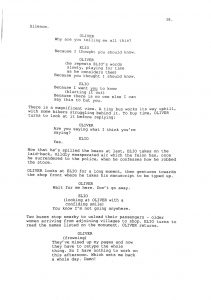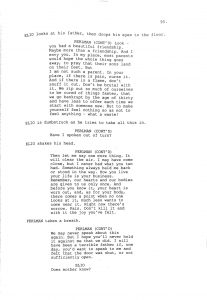hello again! it’s good to be back. now, if you’ve been anywhere within a ten mile radius of me in the past two months, you know that my life-long elvis obsession has flared up and is in full swing!
i’ve been a diehard elvis fan since i was about three years old. i’d walk around the house, singing “Blue Christmas”, lips curled and voice bellowing. i ate my breakfast on a plate with his face on it and drank my pepsi from a mug with his face on it (still do, sometimes, tbh). i guess growing up in mississippi, especially so close to tupelo, there’s just something that makes you feel close to him. or, that’s the case for me, anyway. i’ve always loved his music, and it’s what inspired me to sing and learn guitar in the first place. i remember being a little girl, imagining myself playing the “Heartbreak Hotel” solo on a red electric in front of the whole town. now, i play it on a red electric in my bedroom at home. like most things that interest me, i could go on about E for hours on end. believe me. or ask anyone who has been around me lately. his music, talent, heart, and spirit just speak to me in a way that no other artist ever has or will. so, when i heard that there would be a movie about him, i was nervous to say the least.
i was terrified that it would be cheesy, exploitative, or just horrendously casted. but, wow, i truly couldn’t have been more wrong. finding out that baz luhrmann was directing was super exciting because i think he’s one of the most talented directors of the past half century. however, he is known for his…less than orthodox approaches to his films.
i won’t lie, initially, when i found out that austin butler would be playing elvis, i nearly lost all hope for the film. it just didn’t seem quite right to me that the cute blond guy from zoey 101 would be the king. right up until the movie came out, i had strong doubts. i saw pictures of him in costume, and i just couldn’t see it. i thought miles teller would have been the better choice. now, while i greatly admire teller, i can confidently say that no one could have played that role as well as austin butler.
when my friends asked me to see the film with them, i was hesitant. i just didn’t want to partake in anything dishonoring E’s legacy. but, with some convincing, i sat on the end of the fourth row with a small coke and a cinnamon pretzel and watched, in my opinion, the greatest biopic of all time. though austin doesn’t look much like elvis in a traditional sense, he just seems to completely transform on screen. you can just feel how hard he worked, the research he did, and the respect he has for the man he embodied. his performance was truly a masterclass in capturing the spirit of another human in film. if austin doesn’t get an oscar for this movie, i will be personally calling the academy and berating them for their foolishness. olivia dejonge’s performance as priscilla is also incredible, and she does steal the show during her screen time with her eerily cilla-like cleverness, wit, and compassion. she and austin have perfect chemistry that is showcased brilliantly in every scene of theirs together. (MILD SPOILER) a scene that comes to mind (probably because i have it memorized) is the scene in which she leaves elvis. you can physically feel their hearts breaking, and it’s just breathtaking.
on the other hand…tom hanks. i never thought i’d say this about him, but his performance just wasn’t giving what it needed to give. the hokey accent was extremely distracting and not very true to character. the colonel was notoriously unlikable, and if it was hanks’ goal to showcase that, he executed it perfectly. for me, it was one of the only flaws of the film. however, i don’t think that it ruins the film in any way. austin plays off of hanks’ off-putting colonel perfectly, which softens the blow of seeing tom hanks in a rare role that he cannot play well.
the soundtrack is an entire story in itself. it takes some of the best elvis songs and revamps them, sometimes in an awesome way and sometimes…not. i love the remastered songs that make the audio better or expand the instrumentals, but there were some unnecessary touches here and there. i’ve gotta say, watching elvis walk through memphis with doja cat playing in the background was laughable and a tad jarring–neither in a good way. i do love some of the rap on the soundtrack, i just think it should’ve been blended a little better or just been bonus tracks rather than being featured in the film because it can really take the viewer out of the 50s vibe and remind them of where we are now. and isn’t that why we go to the theatre–to escape where we are now? again, could just be me. the covers in the film are so incredible, and the actors who play b.b. king, big mama thornton, little richard, and sister rosetta tharpe deserve all the accolades in the world for their acting and musical performances–just as the musicians themselves deserve full credit for the way that they revolutionized music and created rock n roll. special mention to shonka dukureh for her magical performance as big mama. may she rest in peace. yola, who is one of my favorite musicians and easily one of the best singer-songwriters of this generation also steals the show with her portrayal of sister rosetta, particularly her performance of “hound dog”. some truly amazing artists (stevie nicks for example) are featured on the soundtrack, and i highly recommend checking you out!
one of the things that blew me away most about the film is that austin butler did most of the singing himself. i nearly didn’t believe it when i found out that he wasn’t lip-syncing because he just does such an amazing job. it’s yet another testament to his dedication to this role. i read that austin was extremely afraid to fill such big shoes and wasn’t entirely sure if he could do it until he found out about elvis losing his mother. elvis and austin both had their mothers pass away when they were 23, which made austin feel closer to him, and from there, he transformed for two years into mr. presley. for his audition, austin was supposed to simply sing “love me tender” but instead opted to play piano and sing “unchained melody”–a hugely emotional ballad, especially for elvis fans because it was the last song he performed live. it was a bold, meaningful choice that paid off in the end.
after seeing this movie for the first time, it was basically all i could think or talk about. i couldn’t wait to see it again. it almost felt like a beautiful dream that i just wasn’t ready to wake up from. i saw it again, and again, and again, and it just seems to get better every time. i had never seen a movie that made me cry, laugh, dance, smile, and feel so close to music until i saw this. so, as the title suggests–i’m not done. if you made it this far, first of all, God bless you, you’re quite a trooper. and secondly, if you have even a remote interest in seeing this film, please, please do yourself the honor of seeing it. and if you’re reading this as an msa student or family member who has yet to see the movie or is ready for another go–by all means, contact me immediately. i would climb a mountain if it meant seeing this again, and the moment i have enough time, i will be sprinting to the nearest theatre.
thank you for reading, and hopefully, i’ll see you next time! ’til then, TCB!
mini playlist (five of emma’s favorite elvis songs):
are you lonesome tonight?
moody blue
she’s not you
one night
kentucky rain










 A picture from the above mentioned scene.
A picture from the above mentioned scene.

